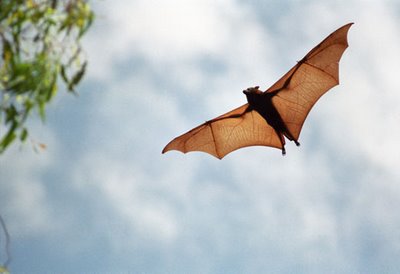Farmland to Forest - Part 4
The Finger Lakes Today
This is the conclusion of a four-part story by Bill Banaszewski about the land surrounding the Finger Lakes and the wildlife and people who inhabited it in days gone by. While many details are based on research in Livingston, Ontario, Yates and Tompkins counties, the story is representative of the entire hilly landscape of the region.
Despite valiant efforts by early settlers to farm the rugged Finger Lakes hillsides, the process of “abandoning the farm” continued until 1925, when the hillside subsistence farmer essentially became a relic of the past. The land, no longer cultivated, followed a process called natural succession, where one vegetative type slowly emerges and replaces another, and if undisturbed over time, leads ultimately to a climax forest.
The early stages of succession started with lands that had been disturbed by farming. Weeds such as chicory and burdock emerged. Quickly a variety of volunteer annual and perennial plants followed, and the deserted farmlands were transformed into a tapestry of color painted by nature’s landscapers: goldenrod, knapweed and aster. As time passed, shrubs emerged and formed a meager canopy over the grasses and weeds. A variety of dogwood shrubs provided berries for migratory songbirds, while thorn apples offered protective nesting places for the increasing number of birds that found the emerging habitat to their liking. Gradually, trees such as aspen began to colonize areas of the Finger Lakes, aided by winds that blew their light seeds great distances across the hillsides.
By the early 1900s, on lands that were abandoned first, native hardwoods invaded the hills. The native oak, maple, hickory and ash trees continued the succession, shading out and eventually killing the sun-loving weeds, shrubs and aspen. Not to be outdone by nature, humans assisted in the process of re-forestation. Beginning in 1933, the Civilian Conservation Corps planted pine and spruce seedlings that would eventually help prevent more soil erosion on the steep hillsides and provide cover for wildlife and future usable timber.
As the plant species changed, so, too, did wildlife populations. Absent from the area for over 50 years, deer began migrating north from Pennsylvania in the early 1900s to graze in abandoned apple orchards and on new plant life. Laws were enacted, management practices were employed, and the constantly evolving, new plant species all combined to attract and benefit wildlife. Turkey, hawks, owls, eagle, river otter and bear are just a few examples of species that have since returned to the Finger Lakes with populations, in some cases, much greater than in the past.
And so for over 100 years the arduous mending process of nature has been at work, slowly changing farmland back to forest. Today, the Finger Lakes Region is a vastly different place than it was when General Sullivan and his soldiers defeated the Senecas in 1779, or when the loggers and first settlers stripped the hillsides of forest cover, and since early farmers began abandoning their land around 1880.
Today approximately 70 percent of the Finger Lakes hillsides is once again forested, compared to 1880 when only 20 percent was in forest cover. Today there is a new breed of farmer in the region: friendly Mennonite family farmers are revitalizing agriculture, and nearly 300 grape growers have planted 10,000 acres of vineyards on the hillsides overlooking the lakes. The logger, generally absent for 150 years, has returned and is harvesting the majestic and valuable red oaks, maples and walnut trees. Our forested hillsides are now dotted with homes and recreational cabins. This new breed of landowner has settled here because of the rural character of the Finger Lakes, in a natural world that does not threaten them as it did the pioneer farmers.
Although I share a great nostalgia for the past, like many readers of this magazine, it is clear to me our past has often been over-glorified when it comes to the land, its people and wildlife. Yes, it was a simple life, but it was a hard life. Yes, the pioneers were surrounded by natural wonders and wildlife, but these resources were seldom appreciated and often viewed as enemies and threats to their survival.
As I reflect on what the Finger Lakes Region has become today – a special place indeed – I cannot help but wonder what our landscape will look like 100 years into the future.
With developers willing to pay $20,000 an acre for prime lake views, will Mennonite farmers and grape growers be able to stay?
Will the new breed of landowners and loggers succumb to economic pressures and harvest the red oak and the stunning old-growth forests that are evolving throughout the region?
Will black bear, coyote and other predatory wildlife once again be eliminated because we are unable to co-exist?
Will bulldozers continue to replace plows on our hillsides? And will the rural character that once attracted people to this area be replaced by sprawling suburbs?
My fondness for the past and what it can teach us about the future is ever-present when I walk in the forested hillsides and reflect on the relics I encounter.
- A pitted axe head embedded in a chestnut stump or a piece of rusted farm machinery resting where it was last used
- A split rail chestnut fence once used to corral livestock, now slowly rotting into the earth
- An old stone foundation that once supported the house or barn of a pioneer farmer
- A water pump that with some effort may still be able to pull water from the ground
- A gravestone telling of the early death of a hardworking farmer
- A lilac tree blooming in a shaded forest where a home once stood
These artifacts tell a story of where we came from and who we are, and, possibly, what we might become.
Adapting the words of William Chapman White from Adirondack Country, as we tramp through the woods and on the shores of the lakes we will find oaks and asters, blue herons and trout, shadows on the rocks and the glint of light on the wavelets just as they were in the summer of 1800, and as they will be in 2080 and beyond. We can stand on a rock on a hill and be in a past we could not have known and in a future we will never see. We can be a part of time was and a part of time yet to come.
For me, this is reason enough to both appreciate and protect our farmlands and forests.
Click here to read Part 1, Part 2 and Part 3 of this series.





















